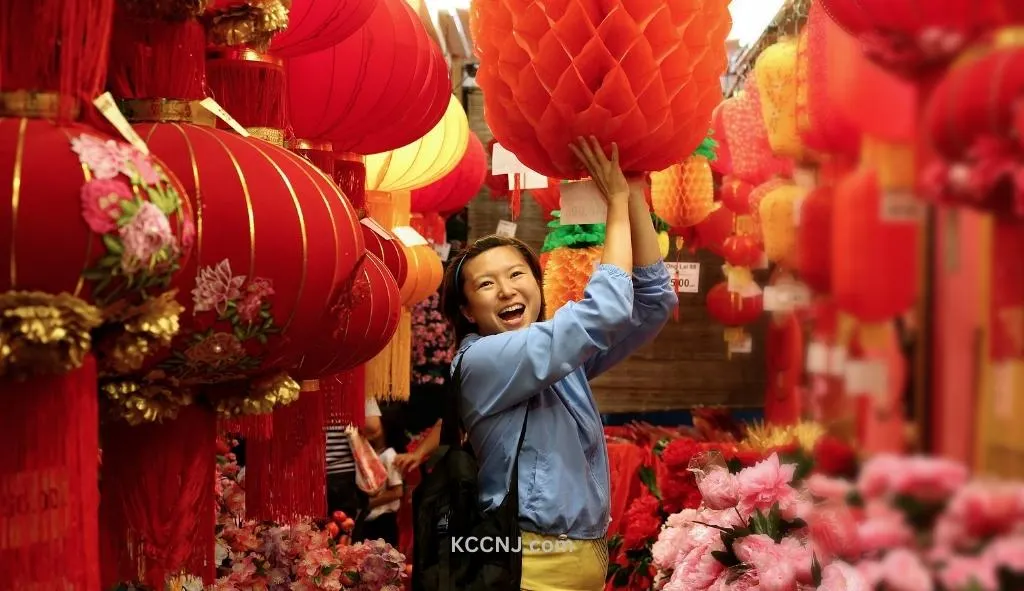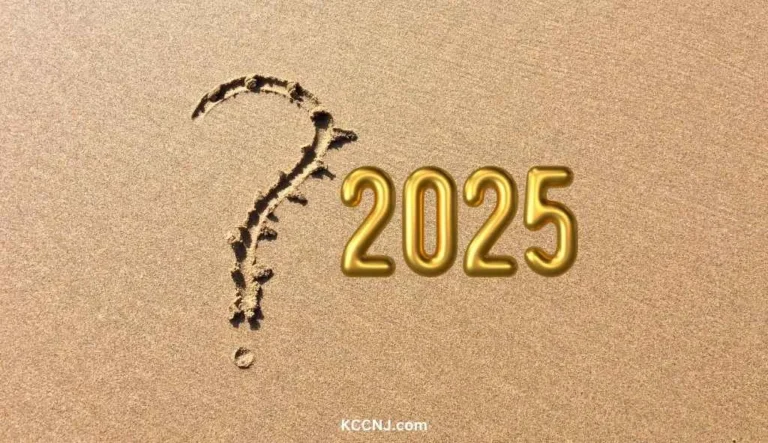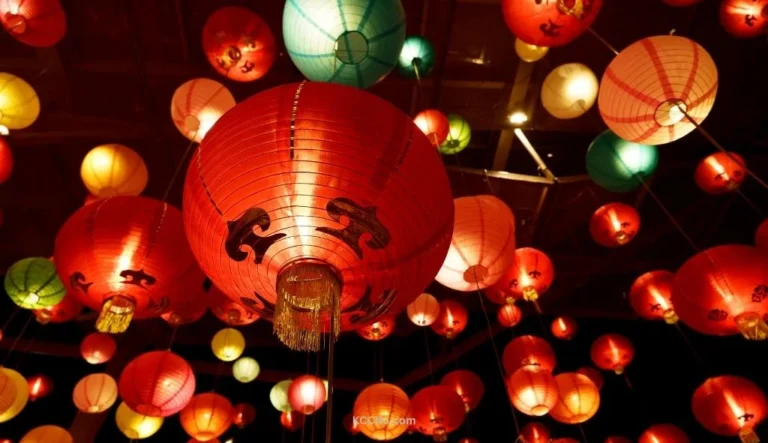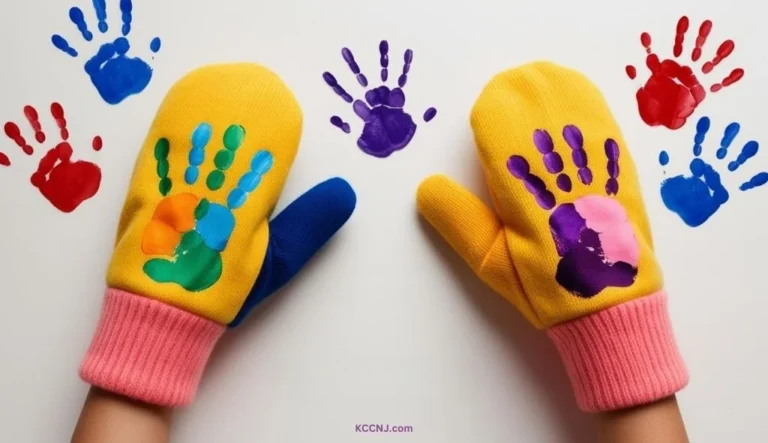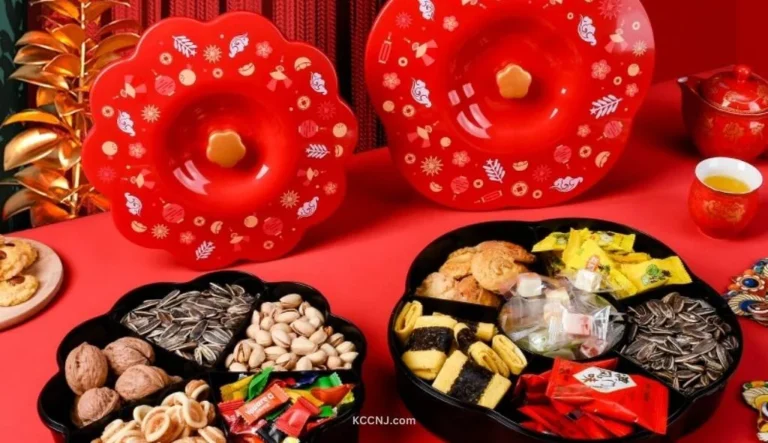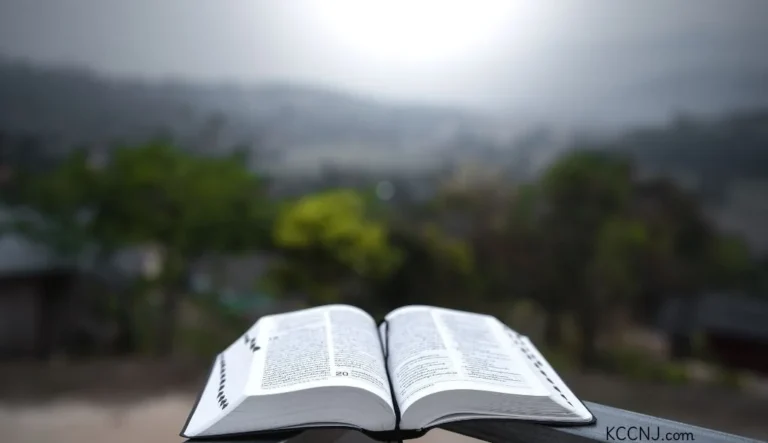Chinese new year decorations 2025: Meanings, Names, & Ideas
Chinese New Year decorations for 2025 focus on the Year of the Snake, featuring red and gold colors, snake motifs, and traditional symbols like lanterns and couplets to bring luck and prosperity.
Traditional Chinese New Year Decorations and Their Meanings
Red Lanterns (红灯笼 – Hóng dēnglóng)
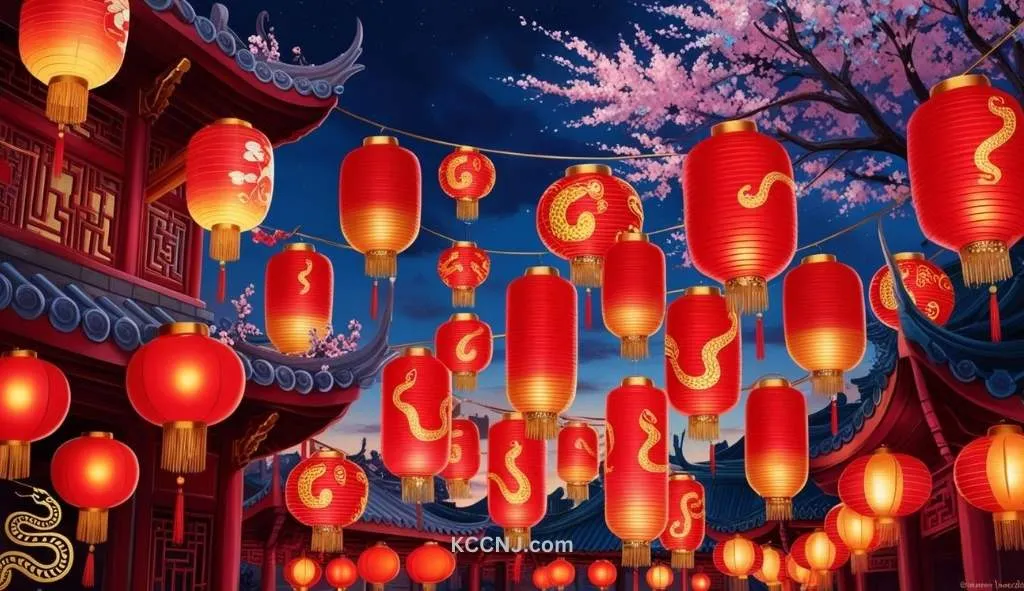
Red lanterns are a key element of Chinese New Year decorations. These bright, eye-catching ornaments serve both practical and symbolic purposes. Traditionally, lanterns were used to light up homes and streets during the festivities. Today, they remain an important decorative item, symbolizing joy, prosperity, and good fortune.
The color red is significant in Chinese culture, representing happiness and warding off evil spirits. During the New Year celebrations, red lanterns can be seen hanging from doorways, trees, and buildings. They create a festive atmosphere and are believed to bring good luck to the household.
For the Year of the Snake in 2025, you might find lanterns with snake designs or patterns. These can be particularly auspicious, combining the lucky symbolism of the lantern with the zodiac animal of the year.
Spring Couplets (春联 – Chūnlián)
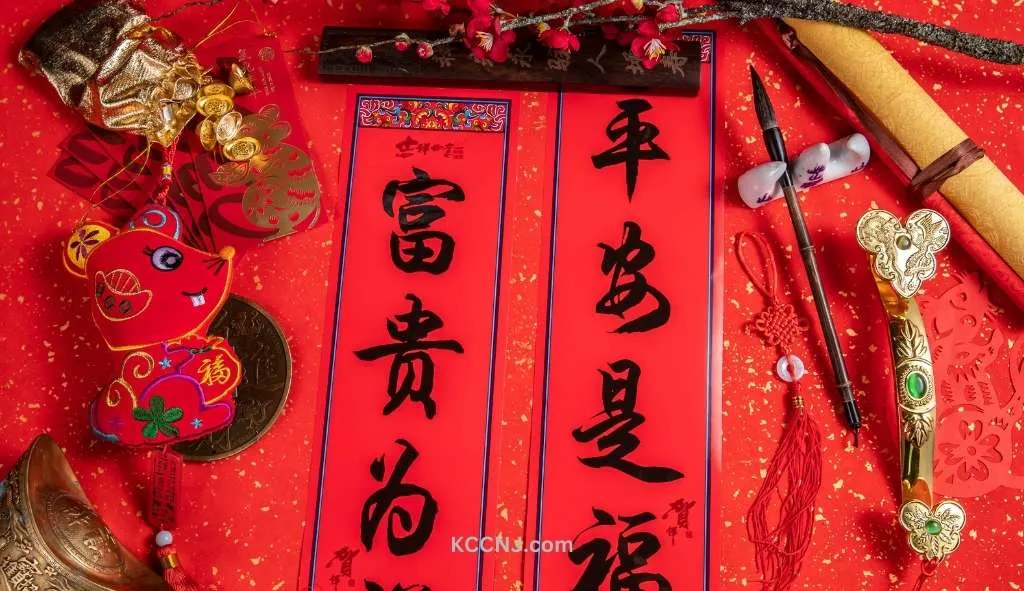
Spring couplets, also known as Chunlian, are pairs of decorative red papers with complementary poetic phrases written in black or gold calligraphy. These are typically hung on either side of doorways. The tradition of using spring couplets dates back to the 14th century.
The poetic verses on spring couplets often express wishes for prosperity, happiness, and good fortune in the coming year. They are an opportunity for families to showcase their hopes and aspirations for the New Year.
In 2025, you might see couplets that incorporate snake imagery or references to qualities associated with the snake, such as wisdom and determination.
Fu Character (福字 – Fúzì)
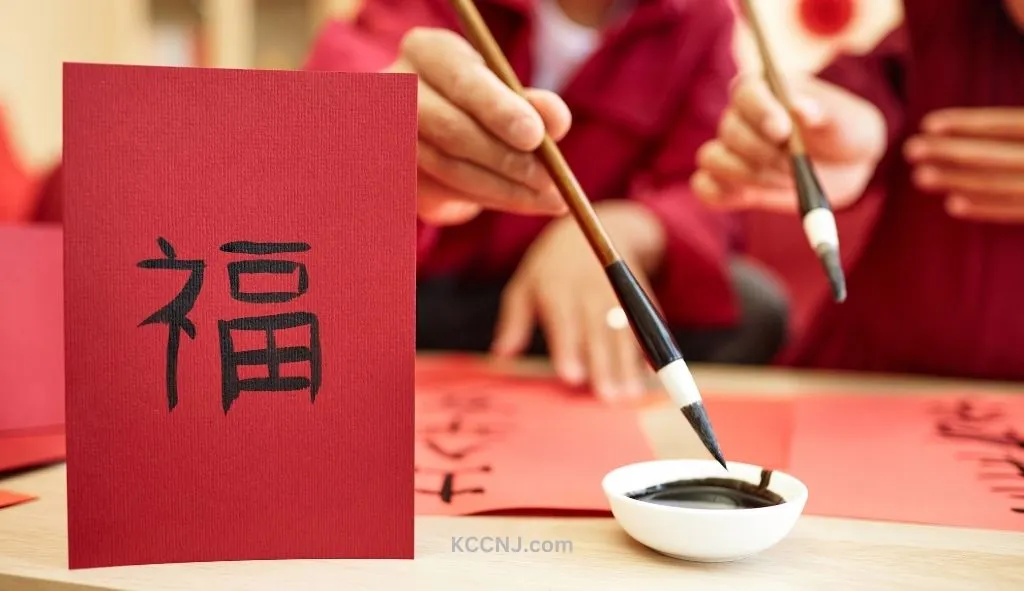
The Chinese character “Fu” (福), meaning good fortune or blessing, is a popular decoration during Chinese New Year. It’s often written on a diamond-shaped piece of red paper and hung upside down on doors or walls.
The practice of hanging the Fu character upside down stems from a wordplay in Chinese. The word for “upside down” (倒 – dào) sounds the same as the word for “arrive” (到 – dào). Therefore, an upside-down Fu is read as “good fortune has arrived.”
For the Year of the Snake, you might see the Fu character incorporated into snake-shaped designs or paired with snake motifs.
Paper Cuttings (剪纸 – Jiǎnzhǐ)
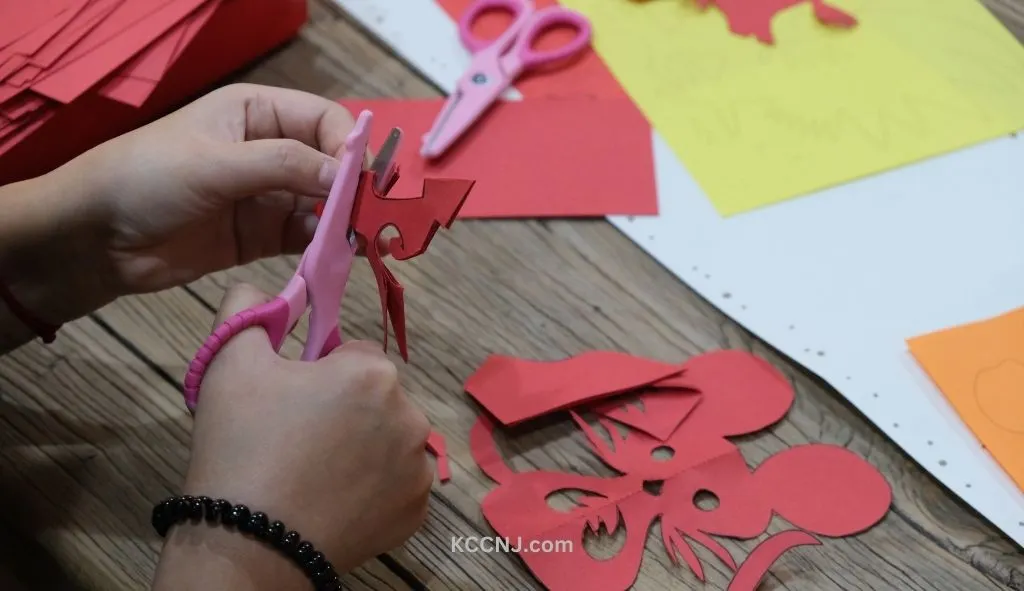
Paper cutting is a traditional Chinese art form that becomes especially prominent during New Year celebrations. These intricate designs, usually cut from red paper, can depict various auspicious symbols, zodiac animals, or scenes from Chinese mythology.
In 2025, expect to see many paper cuttings featuring snakes. These might show snakes coiled around other lucky symbols or depict scenes from snake-related myths and legends.
Paper cuttings are often pasted on windows or doors. They not only serve as decorations but are also believed to bring good luck and ward off evil spirits.
Firecrackers
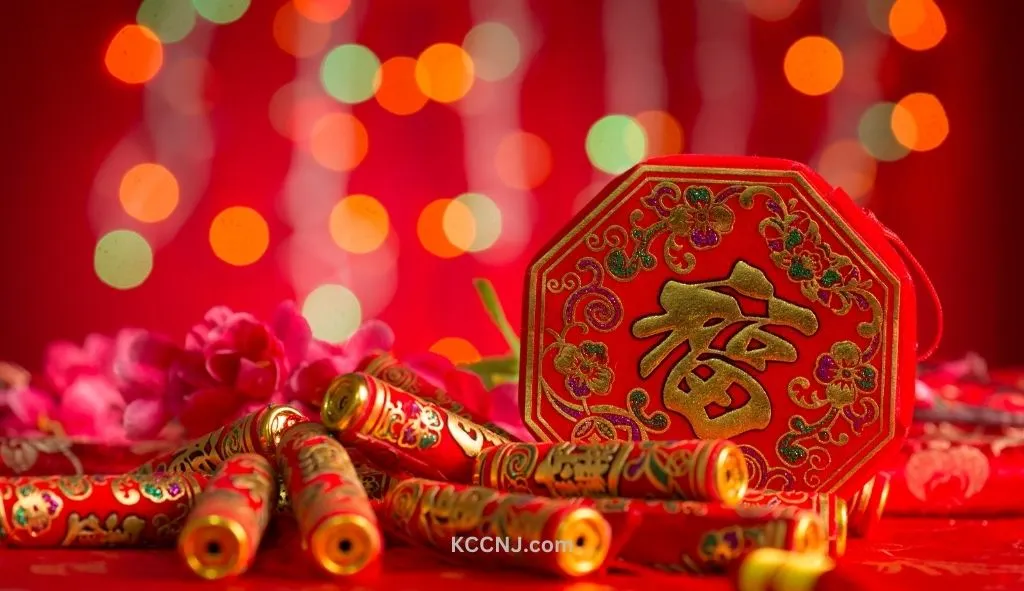
Setting off firecrackers is a major custom during Chinese New Year. Traditionally used to scare away evil spirits, particularly the mythical beast Nian, firecrackers now symbolize the driving away of bad luck and the welcoming of prosperity.
Chinese Knots
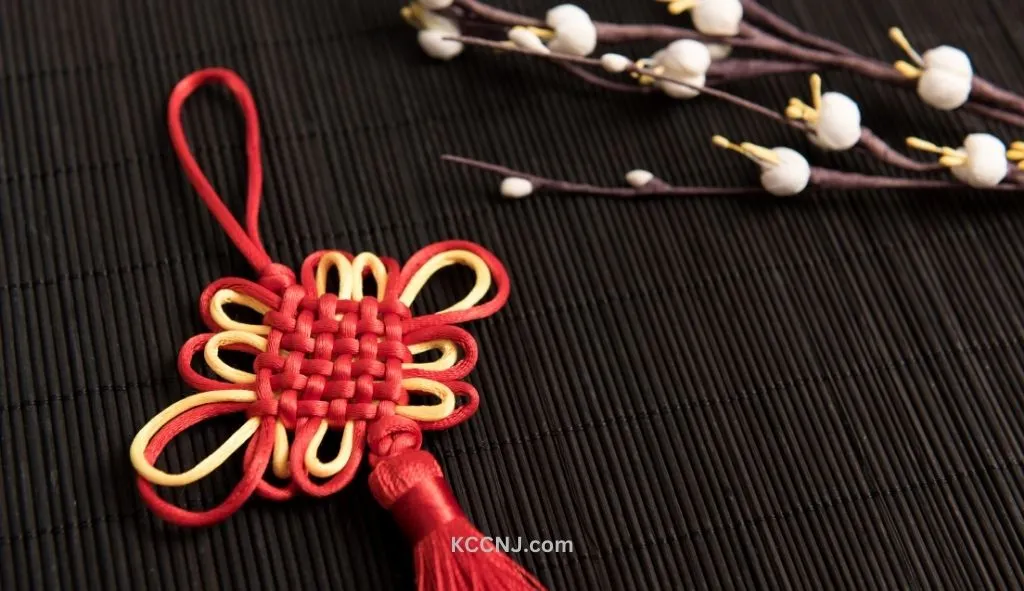
Chinese knots, or “Zhongguo jie,” are decorative handicrafts made from a single length of cord. Each knot shape has symbolic meaning, often representing good luck, prosperity, or unity. Red is the most common color used, as it’s associated with good fortune in Chinese culture.
Flowers and Plants
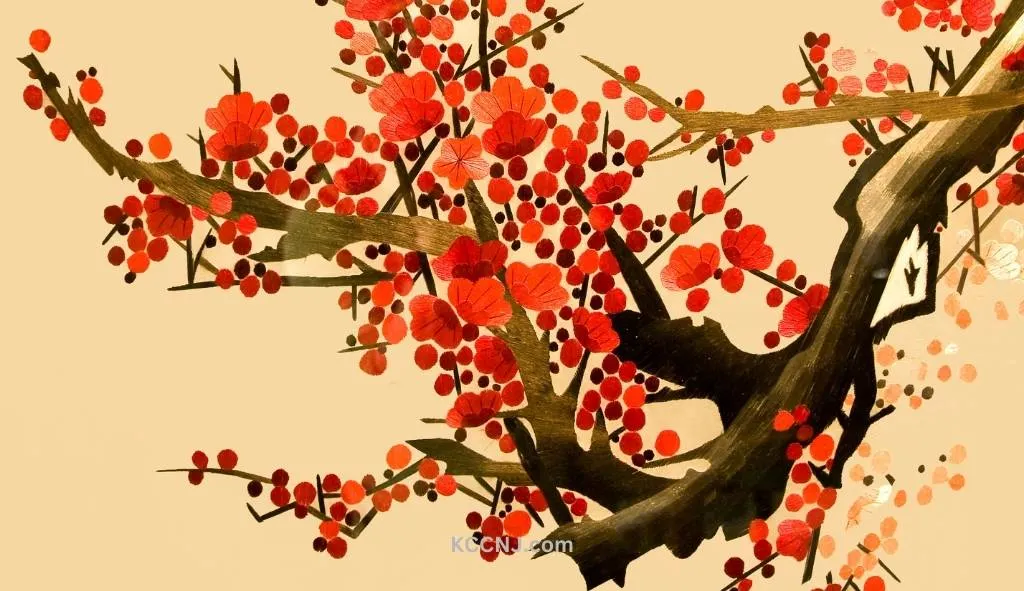
Various flowers and plants hold special significance during Chinese New Year:
- Plum and cherry blossoms symbolize resilience, hope, and new beginnings.
- Kumquat trees represent wealth and good fortune.
- Orchids symbolize fertility, abundance, and refinement.
- Bamboo represents strength, flexibility, and longevity.
These plants are often used as decorations or given as gifts to bring luck and prosperity in the new year.
New Year Paintings
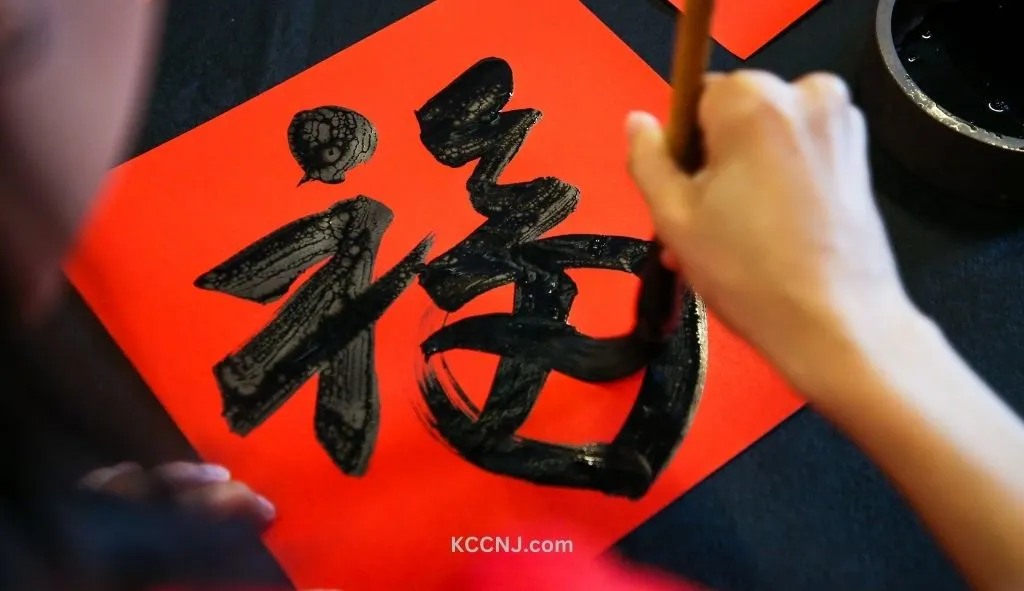
New Year paintings, or “nianhua,” are traditional Chinese woodblock prints used for decoration during the festival. These colorful artworks often depict auspicious themes, mythological figures, or scenes from daily life.
Red Envelopes
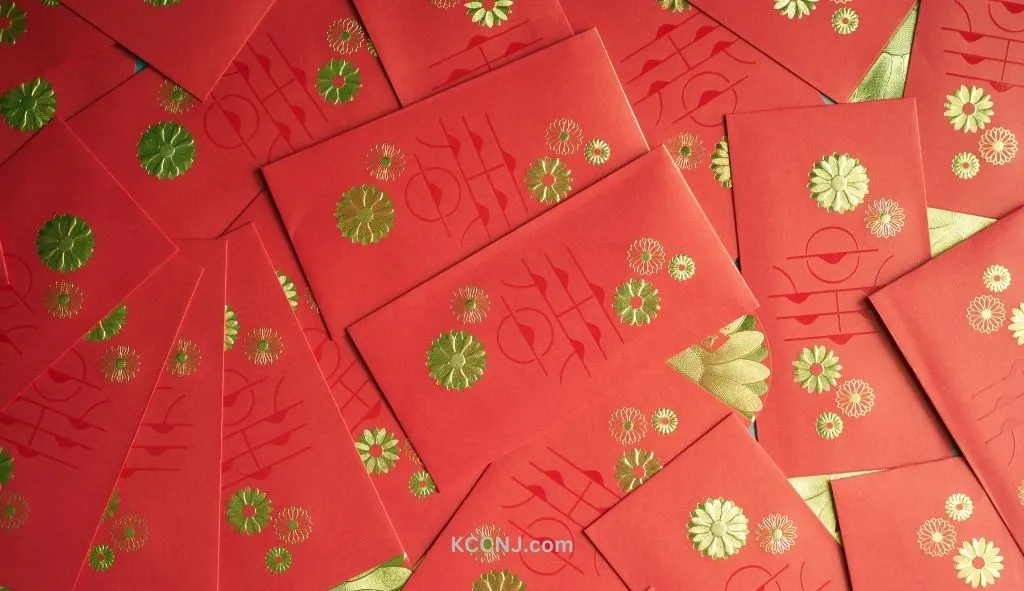
While not strictly a decoration, red envelopes (hongbao) are an essential part of Chinese New Year. These red packets containing money are given to children and unmarried adults as a symbol of good luck and prosperity.
Zodiac Toys
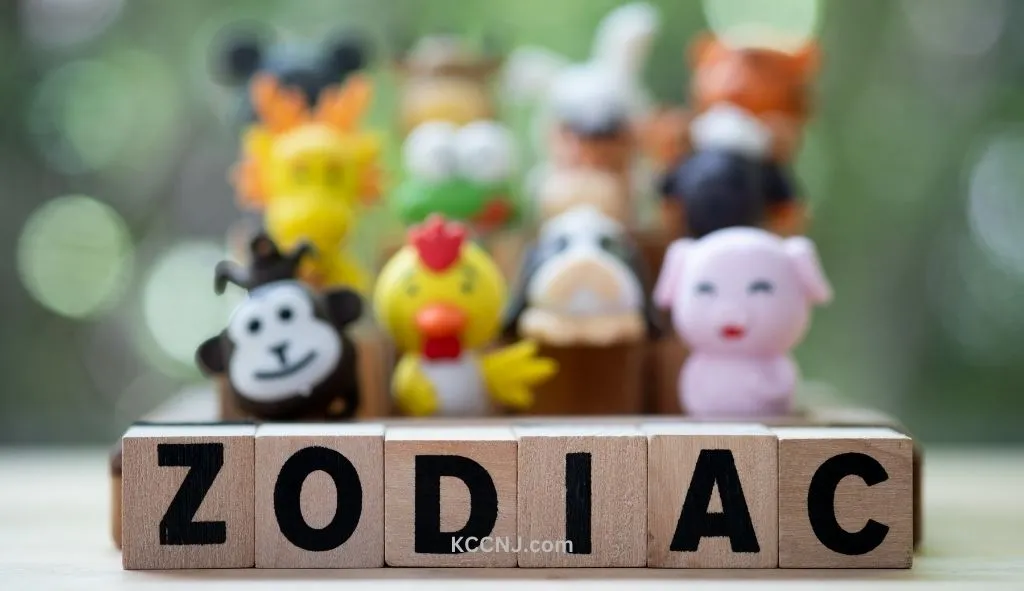
Soft toys or figurines representing the zodiac animal of the year are popular decorations and gifts. For 2025, the Year of the Snake, snake-themed decorations will be particularly auspicious.
Modern Chinese New Year Decorations for 2025
Snake-Themed Ornaments
As 2025 is the Year of the Snake, decorations featuring snakes will be particularly popular. These might include:
- Snake figurines: Small statues or figurines of snakes, often made from materials like jade or gold-colored metal.
- Snake-shaped lanterns: Traditional lanterns designed in the shape of snakes.
- Snake paintings or posters: Artistic representations of snakes, often incorporating other auspicious symbols.
- Snake-themed cushions or throws: Decorative items for sofas or beds featuring snake designs.
These snake-themed decorations are not just ornamental. In Chinese culture, the snake is associated with wisdom, determination, and transformation. Displaying snake symbols during the Year of the Snake is believed to bring these positive qualities into one’s life.
Modern Interpretations of Traditional Decorations
While traditional decorations remain popular, many people also incorporate modern design elements into their Chinese New Year decor. Some examples include:
- LED lanterns: Traditional lantern shapes with modern LED lighting for a contemporary twist.
- Digital red envelopes: Virtual versions of the traditional red envelopes used for giving money gifts.
- Minimalist paper cuttings: Simplified versions of traditional paper cutting designs, often with a more geometric or abstract style.
- Fusion decor: Items that blend Chinese New Year themes with contemporary design aesthetics.
These modern interpretations allow people to celebrate the traditional aspects of Chinese New Year while also reflecting current design trends.
Symbolic Plants and Flowers for Chinese New Year 2025
Kumquat Trees
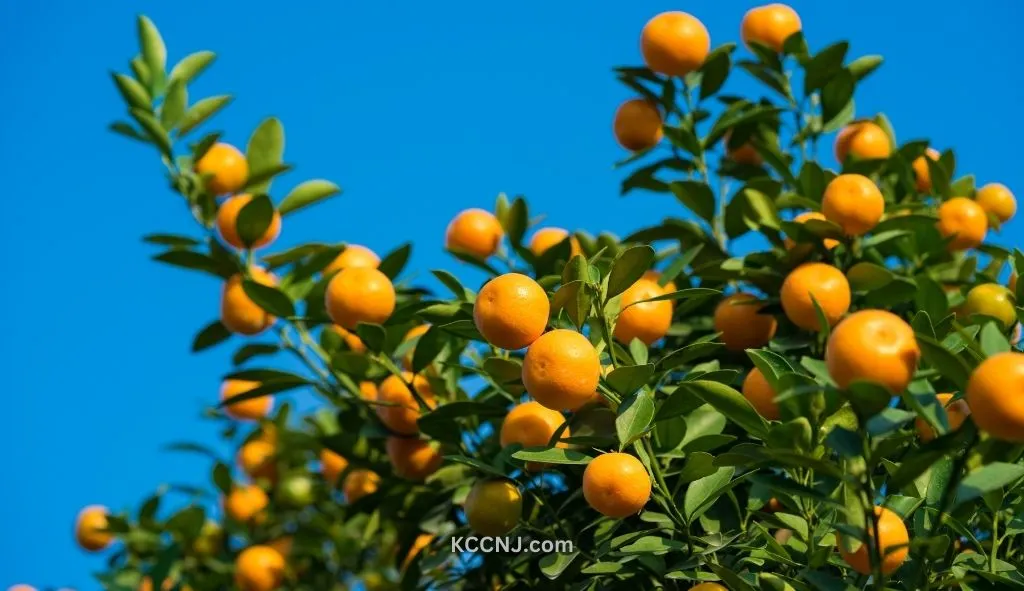
Kumquat trees are a popular decoration during Chinese New Year, especially in southern China. These small citrus trees with golden-orange fruits symbolize good luck and prosperity.
The word for kumquat in Cantonese sounds similar to the words for “gold” and “good luck.” Therefore, having a kumquat tree in the home is believed to bring wealth and good fortune for the coming year.
During the Year of the Snake, you might see kumquat trees decorated with small snake ornaments or paired with other snake-themed decorations.
Plum Blossoms
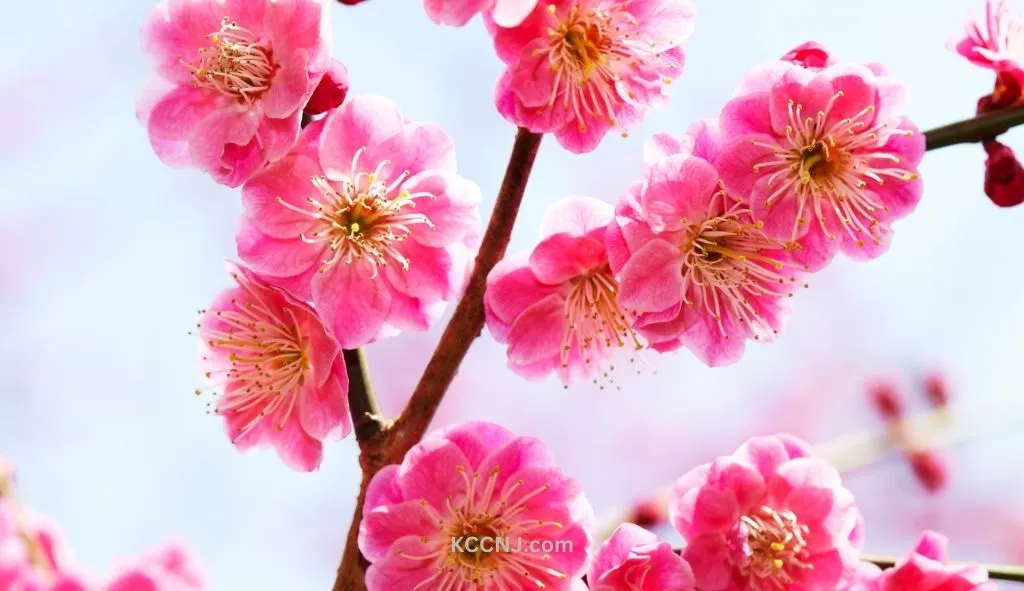
Plum blossoms are another significant flower in Chinese New Year decorations. These delicate flowers, which bloom in late winter, symbolize perseverance and hope. They represent the ability to thrive in harsh conditions, making them a powerful symbol of resilience and new beginnings.
In 2025, arrangements combining plum blossoms with snake motifs could be particularly auspicious, blending the snake’s wisdom with the plum blossom’s resilience.
Orchids
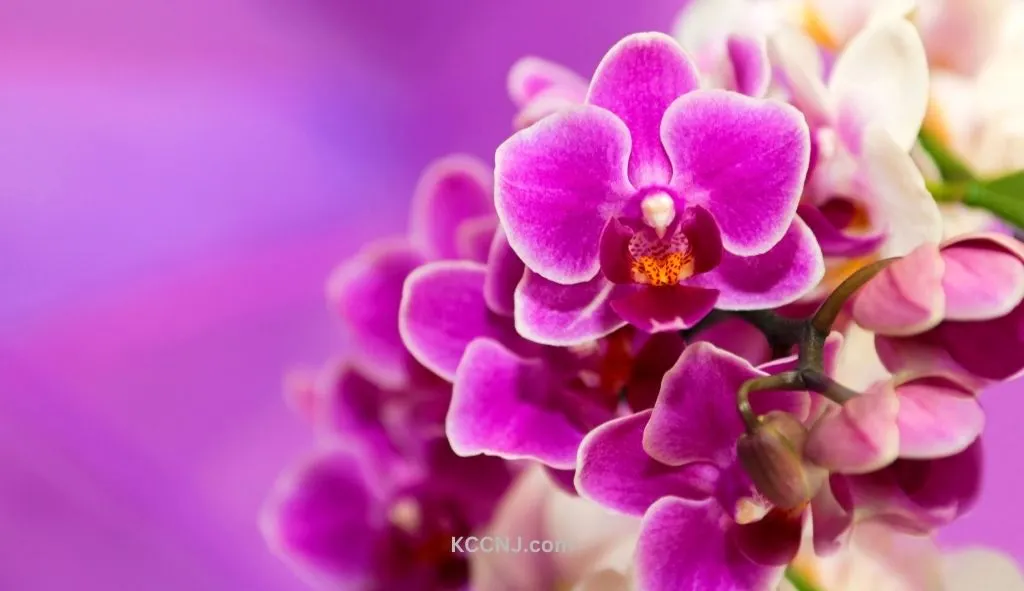
Orchids are prized for their elegance and are associated with fertility, luxury, and beauty in Chinese culture. During Chinese New Year, orchids are often given as gifts or used as decorative centerpieces.
For the Year of the Snake, you might see orchid arrangements that incorporate snake-like curves or patterns, harmonizing the flower’s beauty with the zodiac animal’s graceful form.
Bamboo
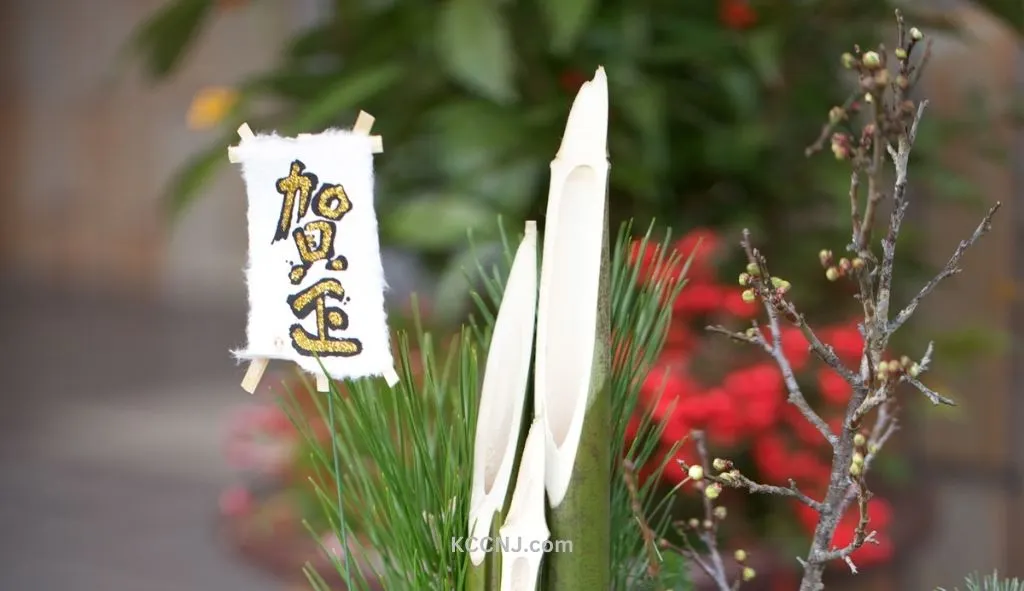
Bamboo is a symbol of strength, flexibility, and longevity in Chinese culture. It’s often used in New Year decorations, either as live plants or in decorative items like vases or wall hangings.
In 2025, look for bamboo arrangements that might include small snake figurines or be shaped to resemble a snake’s sinuous form.
Color Symbolism in Chinese New Year Decorations
Red
Red is the most important color in Chinese New Year decorations. It symbolizes good fortune, joy, and prosperity. Red is believed to ward off evil spirits and bring good luck, which is why it’s used so extensively in New Year decorations.
During the Year of the Snake, you’ll see red used in various decorations, from lanterns and couplets to clothing and gift wrappings.
Gold
Gold represents wealth and prosperity in Chinese culture. It’s often used alongside red in New Year decorations to symbolize wishes for financial success in the coming year.
For the Year of the Snake, gold might be used to create snake-shaped ornaments or to add accents to snake-themed decorations.
Green
Green is associated with growth, harmony, and longevity. In the context of the Year of the Snake, green might be used more prominently, as snakes are often associated with this color.
You might see green incorporated into snake-themed decorations or used as a complementary color to the traditional red and gold.
DIY Chinese New Year Decoration Ideas for 2025
Creating your own decorations can be a fun way to celebrate Chinese New Year. Here are some ideas for DIY decorations suitable for the Year of the Snake:
Snake-Shaped Paper Chain
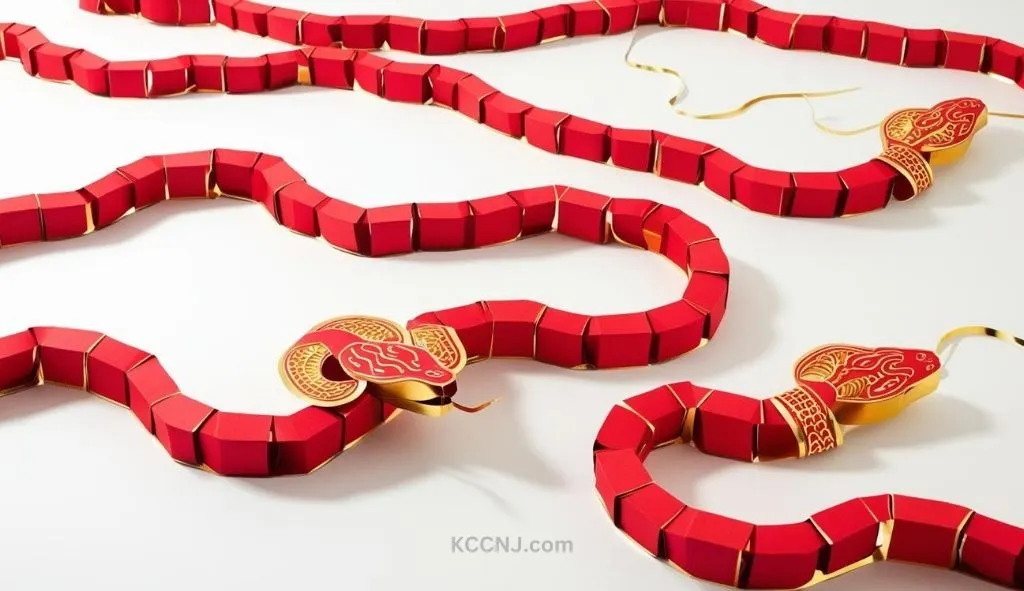
Materials needed:
- Colored paper (red, gold, and green)
- Scissors
- Glue or tape
Instructions:
- Cut strips of colored paper, about 1 inch wide and 6 inches long.
- Form each strip into a loop and glue or tape the ends together.
- Before closing each subsequent loop, thread it through the previous one.
- Alternate colors to create a festive look.
- Shape the chain into a snake form, adding a paper head and tail at the ends.
This simple craft can be used to decorate walls or doorways, bringing a playful snake theme to your New Year decorations.
Origami Snakes
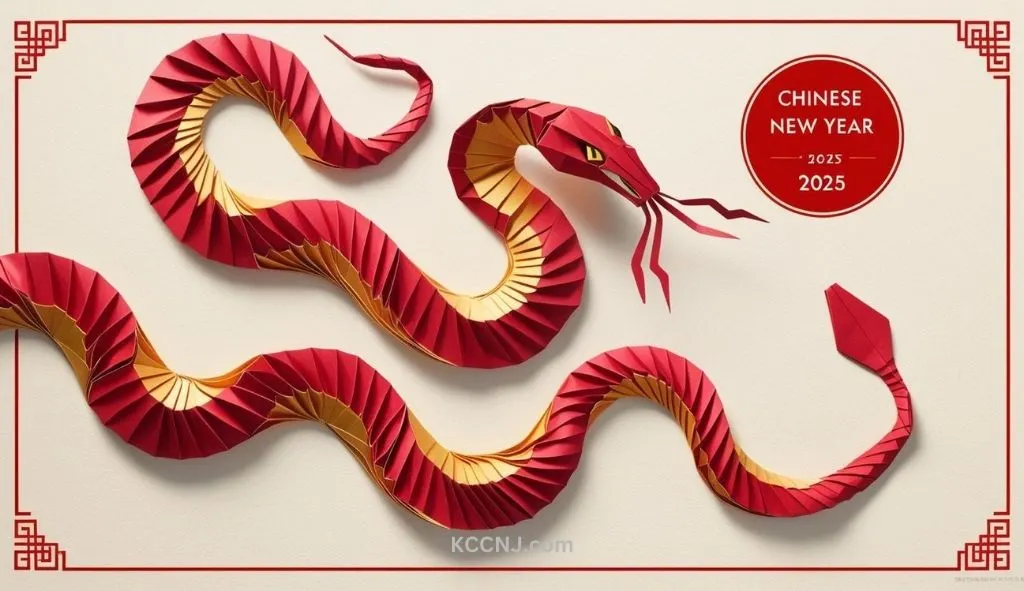
Materials needed:
- Origami paper in various colors
- Markers for drawing eyes
Instructions:
- Follow basic origami snake folding instructions, which can be found online.
- Use red, gold, or green paper for a traditional look.
- Draw eyes on the snake’s head with markers.
- Create multiple snakes and hang them from the ceiling or arrange them on tables.
Origami snakes can be a delightful addition to your Year of the Snake decorations, showcasing both the zodiac animal and the art of paper folding.
Snake-Themed Lantern
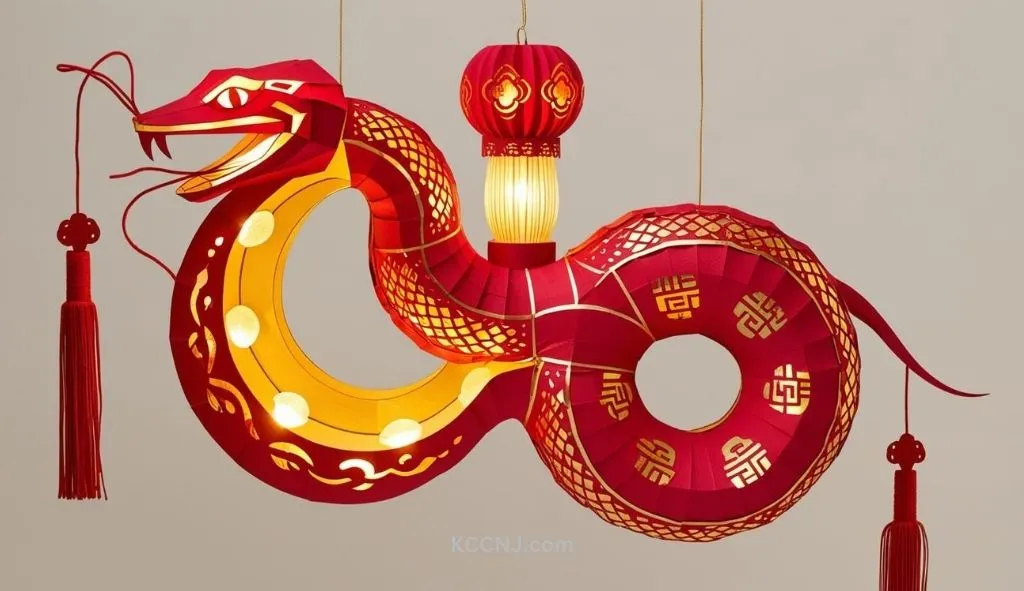
Materials needed:
- Red paper
- Scissors
- Glue
- String or ribbon
- Gold paint or marker
Instructions:
- Cut a strip of red paper about 1 inch wide and 12 inches long for the lantern’s body.
- Fold the strip accordion-style.
- Glue the ends together to form a circle.
- Cut two small circles from red paper for the top and bottom of the lantern.
- Glue these circles to the accordion-folded body.
- Use gold paint or a marker to draw snake scales on the lantern.
- Attach a string or ribbon for hanging.
This DIY lantern combines the traditional red lantern with snake-themed elements, perfect for the Year of the Snake celebrations.
Upcycled Bottle Lanterns
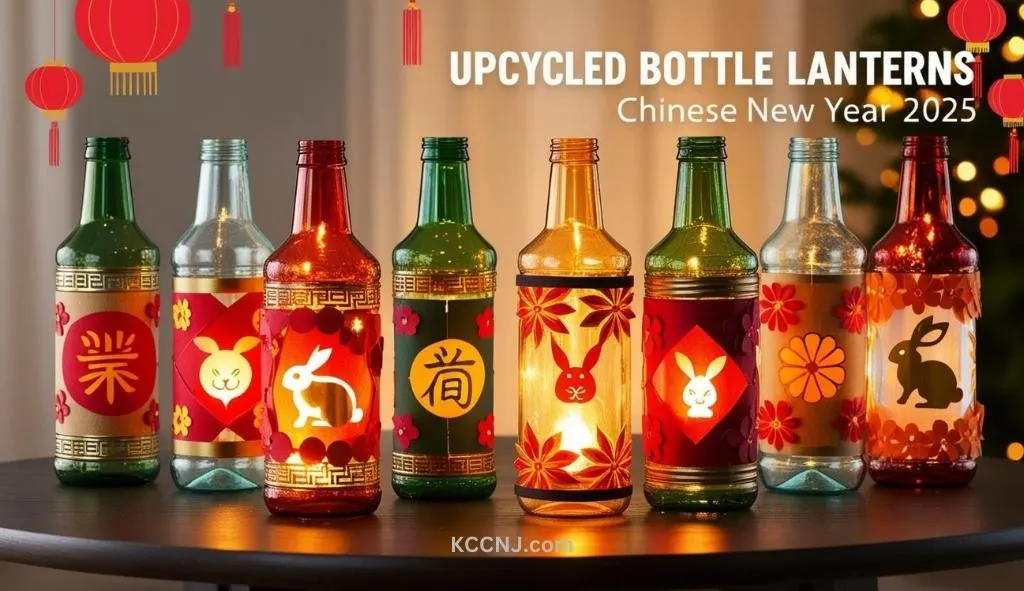
Transform empty glass bottles into beautiful lanterns. Paint the bottles red or gold, then add snake-inspired patterns using paint or adhesive stickers. Place LED tea lights inside for a soft, warm glow. These can be arranged on tables or hung using wire or strong string.
Embroidered Snake Wall Hanging
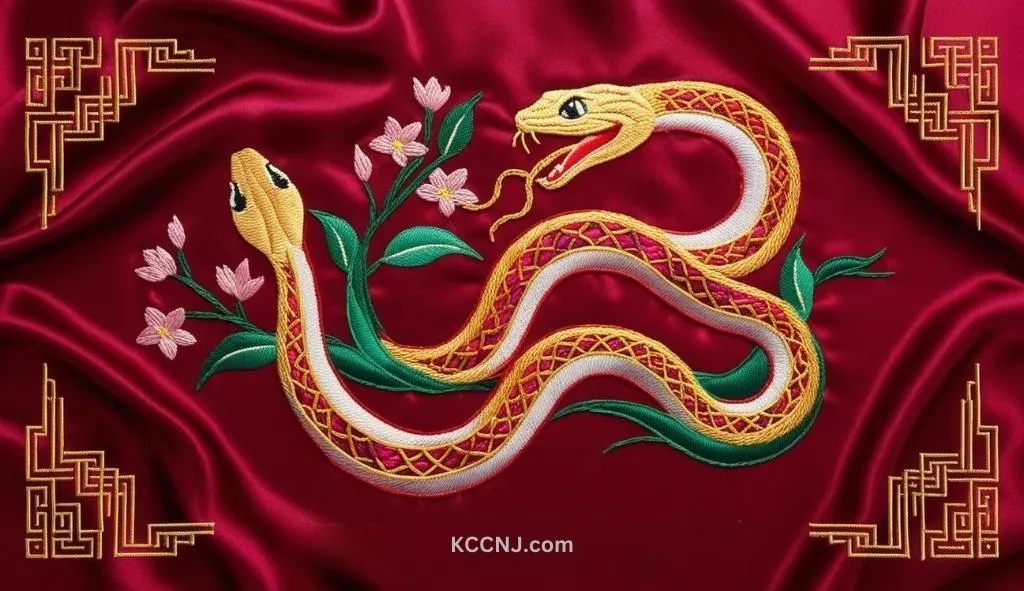
Create a stunning wall hanging using a piece of red fabric and embroidery floss. Draw or trace a simple snake design onto the fabric, then embroider it using gold thread. Add Chinese characters for luck or prosperity. Frame the finished piece or hang it directly on the wall for a personalized and artistic decoration.
Placement of Chinese New Year Decorations
The placement of decorations is important in Chinese culture, as it’s believed to affect the flow of energy or “qi” in a space. Here are some guidelines for placing your Chinese New Year decorations:
Entrance and Front Door
The entrance to your home is considered crucial in feng shui, as it’s where energy enters. Place these decorations near your front door:
- Spring couplets on either side of the door
- A Fu character (upside down) on the door
- Red lanterns hanging near the entrance
These decorations welcome good fortune into your home for the New Year.
Living Room
The living room is often the center of New Year celebrations. Decorate this space with:
- A kumquat tree or other auspicious plants
- Snake-themed ornaments or figurines
- Red and gold decorations, such as cushions or wall hangings
These decorations create a festive atmosphere and promote good energy in the main gathering space.
Windows
Windows are considered the “eyes” of a home in feng shui. Decorate them with:
- Paper cuttings
- Small lanterns
- Snake-themed window stickers
These decorations not only look festive but are also believed to protect the home from negative influences.
Dining Table
The dining table is important for New Year feasts. Decorate it with:
- A centerpiece featuring flowers like orchids or plum blossoms
- Red table runners or placemats
- Small snake figurines or ornaments
These decorations set the stage for prosperous and joyful New Year meals.
Taboos in Chinese New Year Decorations
While decorating for Chinese New Year, it’s important to be aware of certain taboos to avoid bringing bad luck. Here are some things to keep in mind:
- Avoid the color white: White is associated with mourning in Chinese culture. Stick to festive colors like red and gold.
- Don’t use withered plants: Fresh flowers and plants symbolize growth and new beginnings. Avoid dried or artificial plants.
- Avoid sharp objects: Sharp items are believed to “cut” good luck. Remove or cover any sharp-edged decorations.
- Don’t hang mirrors facing the door: This is believed to reflect good luck away from the home.
- Avoid the number four: The word for “four” sounds similar to “death” in Chinese. Avoid grouping decorations in fours.
By being mindful of these taboos, you can ensure your decorations bring only positive energy into your home for the New Year.
Cleaning and Preparing for Chinese New Year Decorations
Before putting up New Year decorations, it’s traditional to thoroughly clean the house. This cleaning, known as “sweeping away the dust,” is more than just a practical task. It symbolizes sweeping away any bad luck from the previous year and preparing the home to welcome good fortune.
Here are some cleaning traditions to consider:
- Clean before New Year’s Day: All cleaning should be done before the New Year begins. Cleaning on New Year’s Day is believed to sweep away good luck.
- Pay attention to windows and doors: These are considered entry points for good fortune, so ensure they’re clean and in good repair.
- Clear out clutter: Removing unnecessary items makes space for new blessings in the coming year.
- Clean hidden areas: Don’t neglect areas like under the bed or inside closets. A thorough cleaning ensures no bad luck is left hiding.
After cleaning, you can start decorating your space for the New Year, creating a fresh and auspicious environment for the Year of the Snake.
Frequently Asked Questions
What are the main colors used in Chinese New Year decorations?
Red and gold are the primary colors used in Chinese New Year decorations. Red symbolizes happiness, good luck, and prosperity, while gold represents wealth and abundance.
What animal is celebrated in the Chinese zodiac for 2025?
2025 is the Year of the Snake in the Chinese zodiac. Snake-themed decorations will be particularly popular and meaningful for this year’s celebrations.
What are some traditional Chinese New Year decorations?
Traditional decorations include red lanterns, spring couplets (poetic phrases written on red paper), the Fu character (福) for good fortune, paper cuttings, and zodiac animal decorations.
When should I start decorating for Chinese New Year?
Most people decorate their homes on Chinese New Year’s Eve, although some may start several days before the festival.
Are there any taboos related to Chinese New Year decorations?
Yes, there are some taboos to be aware of. For example, avoid using white decorations as white is associated with mourning in Chinese culture. Also, don’t hang mirrors facing the door, as this is believed to reflect good luck away from the home.

